I honestly can't live a day without dosa. Whether it's a quick breakfast before work or a lazy Sunday brunch, there's something magical about that first bite of a perfectly crispy dosa. Growing up, I watched my mom transform simple ingredients into the most incredible fermented batter that would bubble and rise overnight like a living thing. She always said the secret wasn't just in the ingredients but in understanding fermentation and letting air work its magic. This authentic Sona Masoori dosa batter recipe takes just 20 minutes of total active prep time, then patience does the rest of the work.
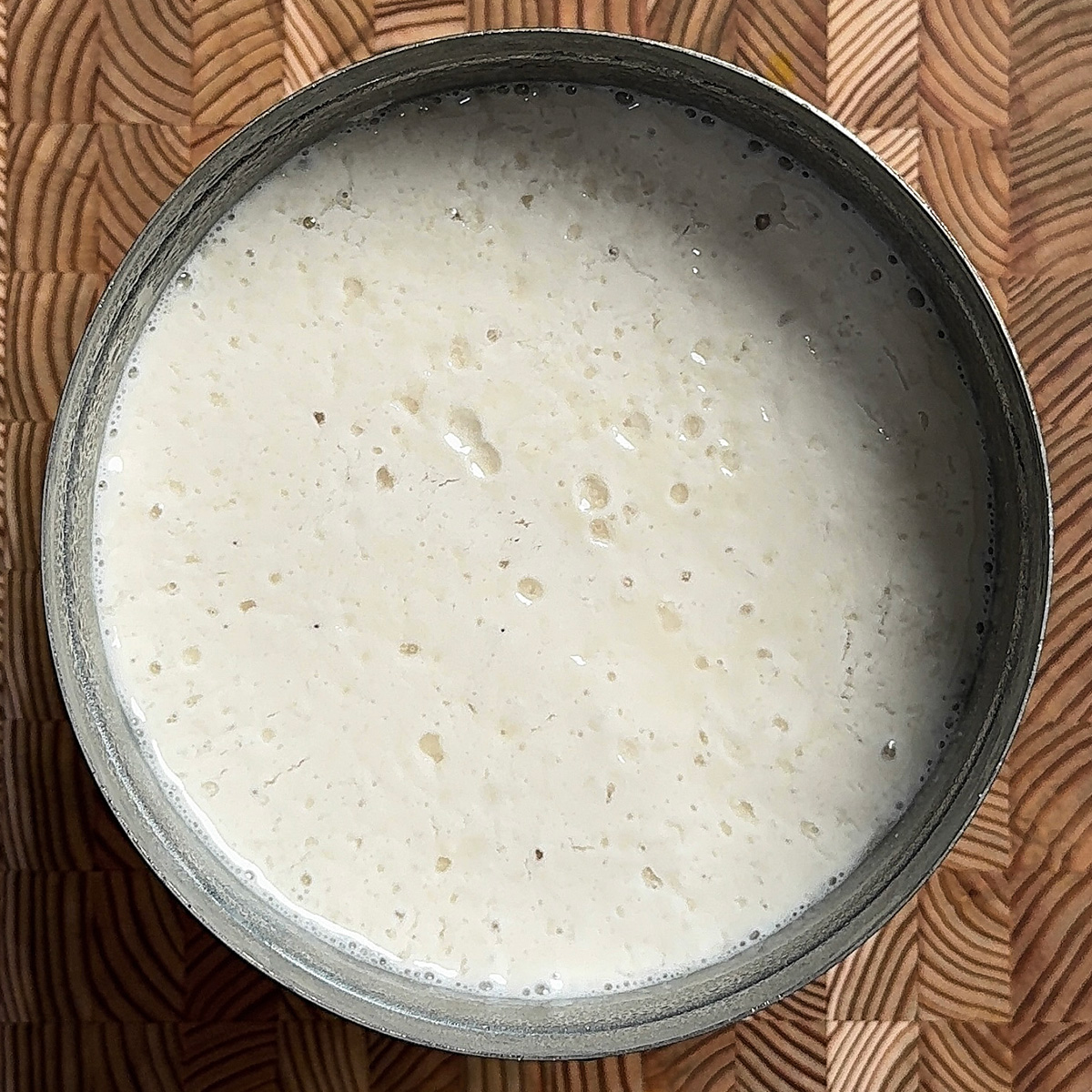
What makes this recipe special isn't just nostalgia but the incredible nutritional foundation it creates. Each serving provides 3g of plant-based protein and 2g of fiber, all while being naturally fermented for better digestion. This batter becomes the base for countless variations like plain dosa, erra karam dosa, egg dosa, and so many more. Once you master this foundation, you'll understand why South Indians have treasured this recipe for generations.
Jump to:
What Makes This Fermented Dosa Batter So Nutritious
Fermentation transforms ordinary grains and lentils into something extraordinary. The natural fermentation process breaks down proteins and starches, making nutrients more bioavailable while creating beneficial probiotics for gut health.
- Complete protein source: Each dosa contains 3g of complete protein from the urad dal and rice combination
- Digestive support: Natural fermentation creates enzymes that aid digestion and reduce bloating
- Low in fat: Just 0.1g of fat per serving, making it heart-healthy
- Complex carbohydrates: 16g of slow-releasing carbs for sustained energy
- Naturally gluten-free: Perfect for those with gluten sensitivities
The fermentation process also increases the bioavailability of B vitamins and creates folate, making this batter a nutritional upgrade from regular flour-based pancakes. When you make three dosas for breakfast, you're getting 9g of protein, nearly as much as an egg!
How Dosa Batter Compares to Sourdough
Like sourdough bread, this fermented dosa batter offers incredible health benefits through natural fermentation. Both rely on wild bacteria and yeasts to break down grains, making nutrients more digestible and creating beneficial probiotics.
Fermentation Benefits
- Improved digestibility: Both break down complex proteins and starches
- Probiotic creation: Natural fermentation produces beneficial bacteria
- Enhanced nutrition: Increases B vitamins and folate availability
- Lower glycemic impact: Fermentation slows sugar absorption
Calorie Comparison
Typical breakfast portions:
- 2-3 dosas: 6g-9g calories
- 2 slices sourdough bread: 140-180 calories
- Protein advantage: Dosas provide 6g-9g protein vs 5-6g in bread
- Fiber benefit: 4g-6g fiber compared to 2-4g in sourdough
The key difference? Dosa batter combines rice and lentils for complete protein, while sourdough relies mainly on wheat. This makes dosas a more balanced breakfast option that keeps you satisfied longer.
Key Ingredients
This authentic Sona Masoori dosa batter recipe relies on just six simple ingredients, each playing a crucial role in creating the perfect texture and flavor. The beauty lies in how these traditional ingredients work together during fermentation.
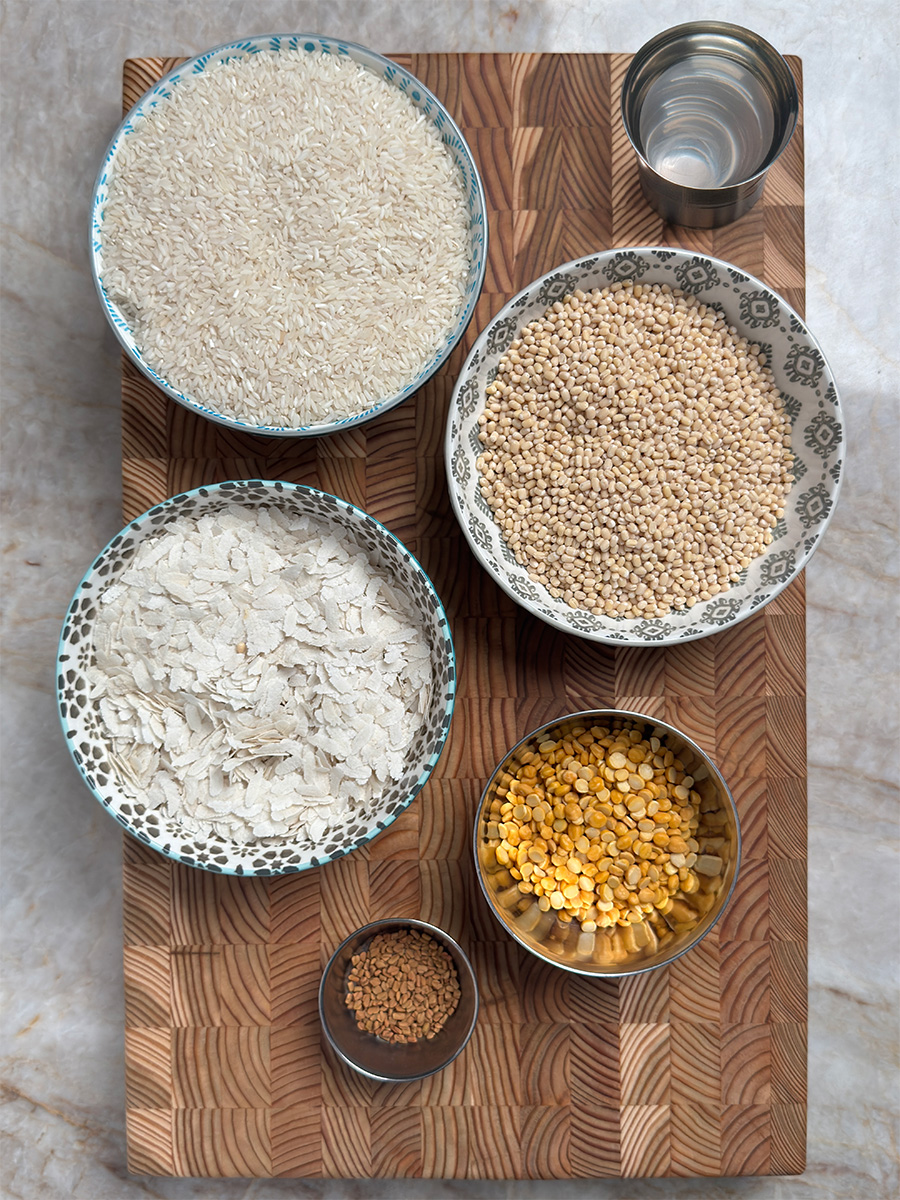
Sona Masoori rice: This premium short-grain rice creates the base structure with its perfect starch content. It provides 150 calories per cup with 3g protein and 1g fiber, giving dosas their characteristic crispy texture.
Urad dal (black gram): The protein source that makes batter fluffy and light. One cup contains 340 calories, 25g protein, and 12g fiber. This is what creates those beautiful air pockets during fermentation.
Chana dal (Bengal gram): Adds subtle sweetness and helps achieve that golden-brown color. With 200 calories, 11g protein, and 10g fiber per cup, it enhances both nutrition and flavor.
Fenugreek seeds: These tiny seeds are fermentation accelerators, helping beneficial bacteria thrive. They add a slight bitter note that balances the batter perfectly.
Poha (flattened rice): The secret ingredient for soft texture! It breaks down during grinding, creating a smoother batter. Contains 150 calories and 4g protein per cup.
Water: Quality matters so use filtered water for best fermentation results.
See recipe card for exact quantities.
Smart Shopping Tips
- Buy whole urad dal: Avoid pre-split varieties for better fermentation
- Choose premium Sona Masoori: Look for uniform, unbroken grains
- Fresh is best: Buy from stores with high turnover for maximum freshness
- Organic when possible: Reduces chemical residues that can inhibit fermentation
How to Make Authentic Sona Masoori Dosa Batter Perfectly
The key to restaurant-quality dosas lies in proper fermentation and achieving the right consistency. My mom always emphasized that patience during fermentation creates those golden-brown, crispy dosas that we all crave.
Pro Tips for Best Results
- Temperature matters: Ideal fermentation happens between 75-85°F (24-29°C)
- Don't add salt early: Salt inhibits fermentation so add it only after the batter has risen
- Use soaking water: Reserve the nutrient-rich soaking water for grinding
- Check consistency: Properly fermented batter should coat a spoon but still pour easily
- Trust the bubbles: Well-fermented batter will be full of tiny air pockets
- Timing varies: Summer fermentation takes 8-10 hours, winter needs 12-15 hours
Test Consistency of Dosa Batter While Grinding
Getting the right consistency is crucial for perfect dosas. The batter should be smooth enough to spread easily but retain some texture for authentic results.
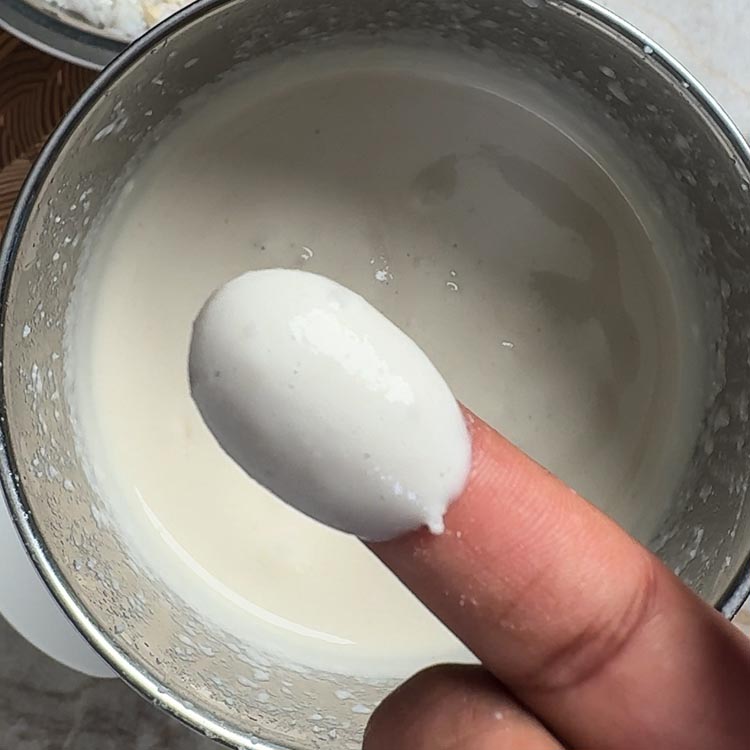
Check dripping consistency: Test the batter by letting it drip from your finger or spoon. It should flow smoothly without being too thick or watery.
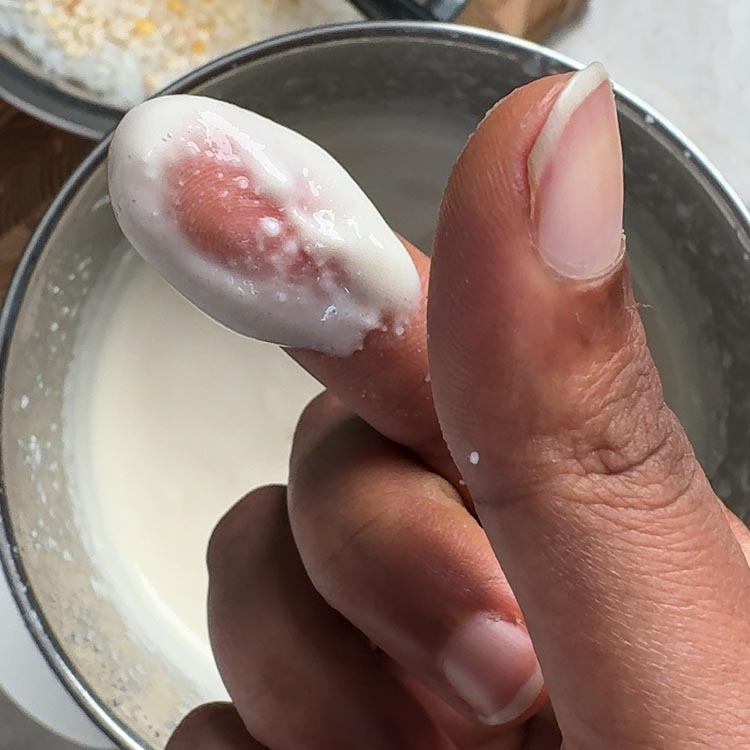
Pinch test for texture: When you pinch the batter between your fingers, you should feel some fine grains but no large chunks. This slight graininess is perfect for authentic dosa texture.
Make-Ahead Strategy
This batter is perfect for meal prep! Make a large batch on weekends and enjoy fresh dosas all week. The fermented batter keeps in the refrigerator for up to one week and actually improves in flavor over the first few days.
- Refrigerate properly: Store in airtight containers to maintain freshness
- Freeze portions: Divide into meal-sized portions and freeze for up to one month
- Thaw gradually: Move frozen batter to refrigerator overnight before use
Instructions
Creating perfect dosa batter is simpler than you might think. The process involves three main stages: preparing ingredients, grinding, and fermentation. Each step builds on the previous one to create that magical transformation.
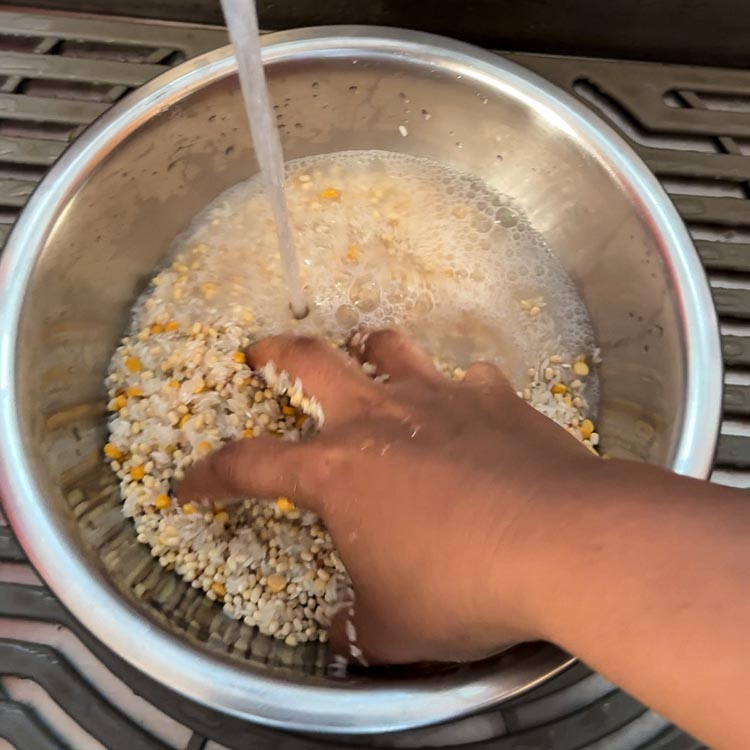
- Wash ingredients together: Wash all dry ingredients together except poha, rinsing 3-4 times until water runs clear. This removes excess starch and impurities that could affect fermentation.
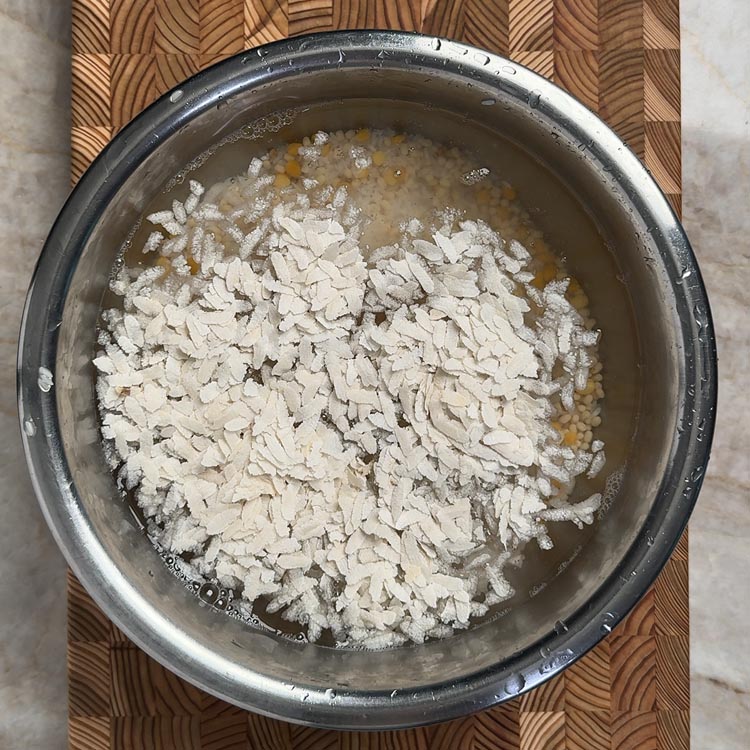
- Add poha and soak: Add poha without washing (it would break apart) and soak everything together for 4-6 hours. The grains will absorb water and soften, making grinding easier.
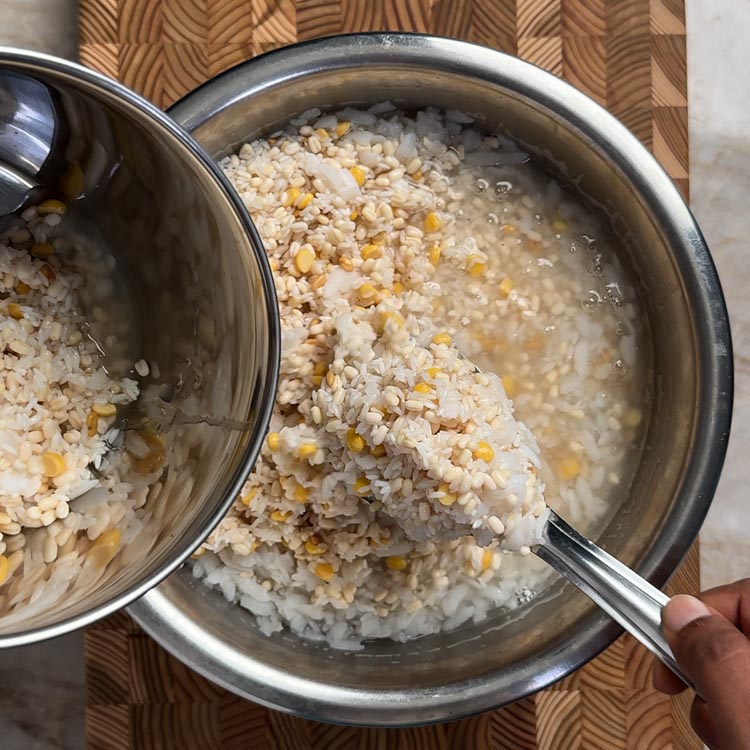
- Grind the batter: Drain ingredients, reserving soaking water. Grind everything together using reserved water gradually until smooth but slightly grainy. This texture is crucial for proper dosa formation.

- Test consistency: Test consistency by checking that batter should be thick but pourable. Transfer to fermentation bowl and cover loosely.
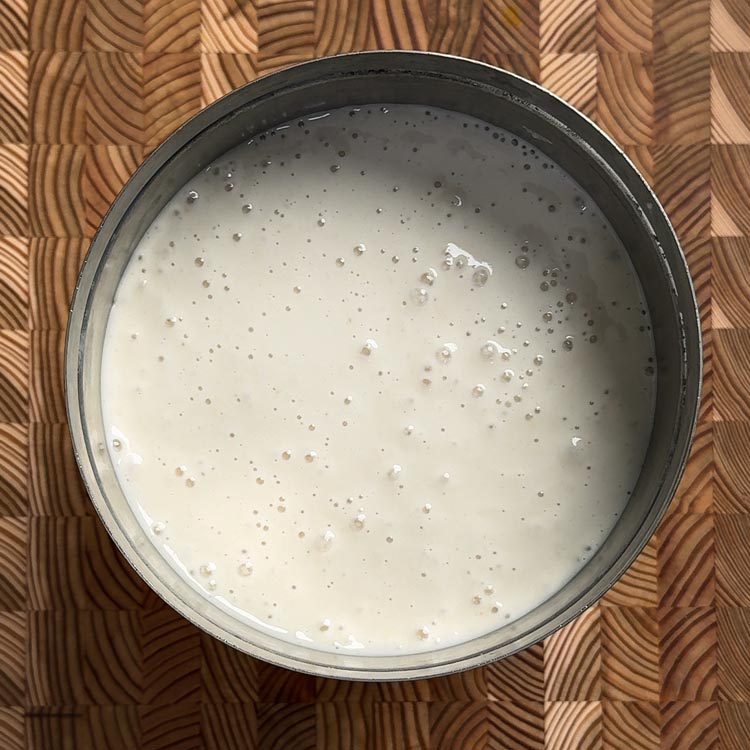
- Ferment the batter: Place in warm spot and wait for magic to happen. Well-fermented batter doubles in size, develops tiny bubbles, and smells pleasantly tangy. Gently stir before using.
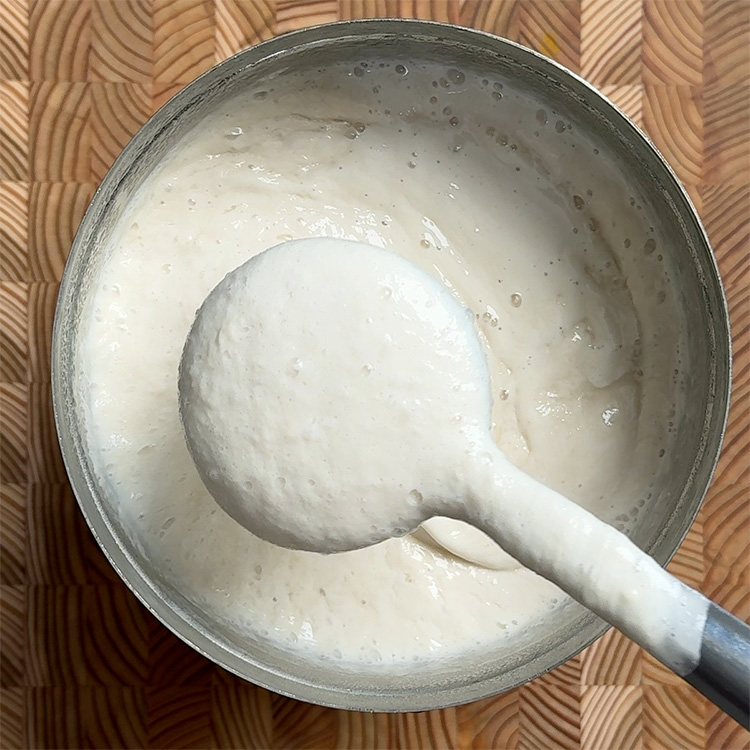
- Final preparation: Stir gently before using and adjust consistency with water if needed. Your authentic Sona Masoori dosa batter is ready for perfect crispy dosas.
Serving Ideas and Variations
This versatile batter opens up a world of South Indian breakfast possibilities. Each variation brings its own nutritional profile while maintaining the fermented base benefits.
How to Serve
Serve hot dosas immediately with coconut chutney and sambar for a complete protein meal. The combination provides all essential amino acids. Coconut chutney adds healthy fats while sambar contributes additional vegetables and lentils. Three dosas with accompaniments provide 9g of protein and 6g of fiber.
- Plain dosa with coconut chutney and sambar
- Ghee dosa for extra richness and vitamin A
- Masala dosa stuffed with spiced potatoes for added carbohydrates
- Egg dosa for an extra 6g protein boost
Delicious Variations
While this traditional recipe is perfect as-is, small additions can create exciting new flavor profiles.
- Erra karam dosa: Spread spicy red chutney before cooking to add antioxidants from red chilies and increase metabolism.
- Rava dosa: Mix in semolina for extra crispiness and additional B vitamins while creating lighter texture.
- Vegetable dosa (Uttapam): Add finely chopped vegetables to batter to increase fiber content and add vitamins A and C.
- Cheese dosa: Sprinkle cheese while cooking to add calcium and make it kid-friendly.
Each variation maintains the base nutritional benefits while adding unique flavors and nutrients.
Equipment
The right equipment makes a significant difference in achieving perfect fermentation and smooth batter consistency. While traditional stone grinders are ideal, modern appliances work well too.
- High-speed blender or Indian mixi: Creates smooth, well-incorporated batter
- Large mixing bowls: Allows batter to double during fermentation
- Fine mesh strainer: For washing ingredients thoroughly
- Fermentation container: Wide, shallow bowls work best for even fermentation
Recommended brands: Preethi mixers work excellently for home quantities, while Vitamix blenders handle larger batches efficiently. A good wet grinder like Ultra or Elgi produces restaurant-quality results.
The fermentation container should be stainless steel or glass. Avoid plastic which can harbor odors and affect fermentation.
Storage
Proper storage extends batter life while maintaining nutritional quality and fermentation benefits. Fresh batter actually improves in flavor over the first few days as fermentation continues slowly.
- Refrigeration: Store in airtight containers for up to one week. Batter continues fermenting slowly, developing deeper flavors. Stir gently before each use and add water if needed to adjust consistency.
- Freezing: Divide into portions and freeze for up to one month. Use freezer-safe containers, leaving space for expansion. Thaw overnight in refrigerator before use.
- Signs of spoilage: Discard if batter smells overly sour, develops mold, or changes color significantly. Fresh batter should smell pleasantly tangy, not sharp or alcoholic.
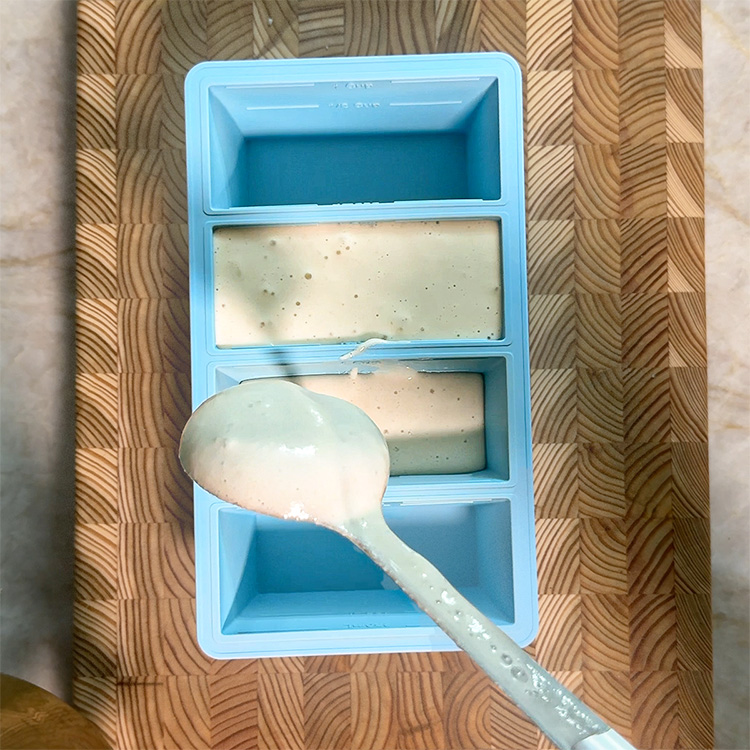
Nutrition
Each serving of Authentic Sona Masoori Dosa Batter Recipe (1 Scoop for dosa (60g batter)) provides 77 calories, 3g of protein, 2g of fiber, and 16g of carbohydrates.
The fermentation process significantly enhances nutritional value by increasing bioavailability of nutrients and creating beneficial probiotics. This makes each dosa not just delicious but genuinely nourishing for digestive health and sustained energy.
Your Questions Answered
Temperature is usually the culprit! Batter needs consistent warmth (75-85°F) to ferment well. In winter, place near a warm oven or heating vent. Also ensure you haven't added salt too early, as it inhibits fermentation.
Absolutely! A high-speed blender or Indian mixi works perfectly. The key is soaking ingredients long enough (4-6 hours) to soften them completely before grinding. You might need to grind in batches for smaller appliances.
You need to incorporate more air into the batter for proper fermentation. After grinding everything to a smooth consistency, use your clean hand to fold and lift the batter repeatedly for 2-3 minutes. This folding motion adds air bubbles that help with fermentation and create fluffier dosas.
Look for these signs: batter doubles in size, develops tiny bubbles throughout, and smells pleasantly sour (not sharp). In summer, this takes 8-10 hours; in winter, up to 15 hours.
Never add salt before fermentation as it inhibits the beneficial bacteria. Add salt only after batter has fermented completely, just before making dosas.
Refrigerate in airtight containers for up to one week. The batter actually improves in flavor over 2-3 days. For longer storage, freeze portions for up to one month.
Now you have the secret to making dosas just like my mom, with that perfect balance of crispy exterior and soft interior that comes from properly fermented batter. The best part? This recipe makes enough batter for 35 dosas, so you can enjoy restaurant-quality results for days! The combination of fermented grains provides sustained energy while the natural probiotics support digestive health.
What's your favorite way to enjoy dosas? Do you prefer them plain and crispy, or loaded with spicy fillings? Let me know in the comments how this authentic batter transforms your breakfast routine!
Pairing
This authentic Sona Masoori dosa batter pairs beautifully with traditional South Indian accompaniments. Serve with coconut chutney for healthy fats, sambar for additional protein and vegetables, erra karam for a spicy kick with antioxidants, and various podi (spice powders) for extra flavor and nutrients. The combination creates a complete, balanced meal that satisfies both taste and nutritional needs.
Authentic Sona Masoori Dosa Batter Recipe
Equipment
- Large mixing bowls for soaking ingredients
- Wet grinder or high-speed blender for grinding batter
- Fine mesh strainer for washing rice and dals
- Large fermentation bowl with lid, capacity 3-4 liters
Ingredients
- 2 cups (440 g) Sona Masoori rice
- 1 cup (220 g) urad dal
- ¼ cup (50 g) chana dal - split Bengal gram
- 1 teaspoon (5 g) fenugreek seeds - methi seeds
- 1 cup (80 g) poha - flattened rice
- 6 cups (1440 ml) water - for soaking and grinding
Instructions
Prepare and Soak Ingredients:
- In a large bowl, combine 2 cups Sona Masoori rice, 1 cup urad dal, ¼ cup chana dal, and 1 teaspoon fenugreek seeds.
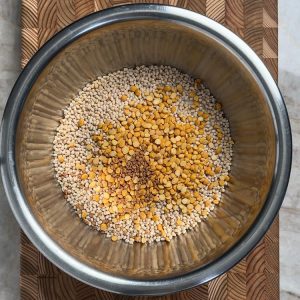
- Rinse this mixture together under cold water 3-4 times until water runs clear.
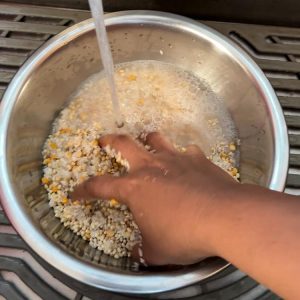
- After washing, add 1 cup poha to the washed ingredients (do not rinse poha separately). Add 6 cups of 6 cups water to cover all ingredients and soak for 4-6 hours.
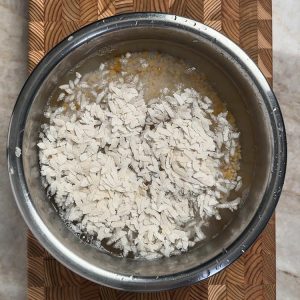
Grind the Batter:
- Using a wet grinder or high-speed blender, grind all ingredients together (rice, urad dal, chana dal, poha, fenugreek seeds) to a smooth batter using the reserved soaking water gradually.
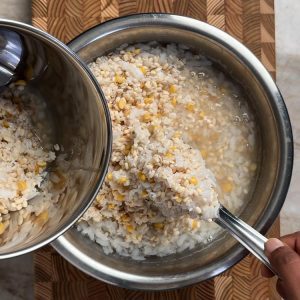
- If your high-speed blender gets hot, take a break and split up grinding time. The batter should not get hot.
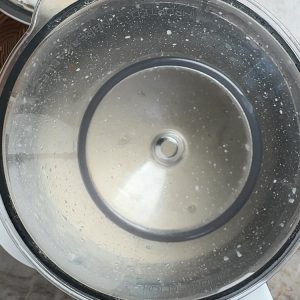
- Test consistency: Test consistency by checking that batter should be thick but pourable. You might still feel some grains, and that is ok. You just can't have big chunks.
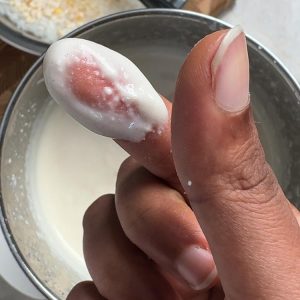
- Add water as needed to achieve a thick but pourable consistency. The batter should be smooth with a slight grainy texture. Transfer to a large fermentation bowl.
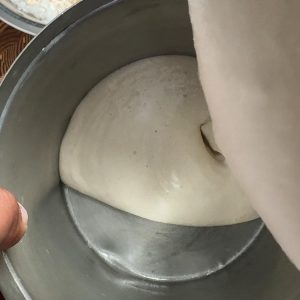
Ferment the Batter:
- Cover the bowl with a lid or clean cloth and place in a warm spot (75-85°F/24-29°C). In summer, fermentation takes 8-10 hours. In winter, it may take 12-15 hours.
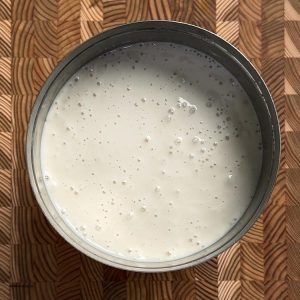
- Well-fermented batter will be bubbly, increased in volume, and have tiny air pockets throughout. It should smell pleasantly sour and tangy. Gently stir once before using.
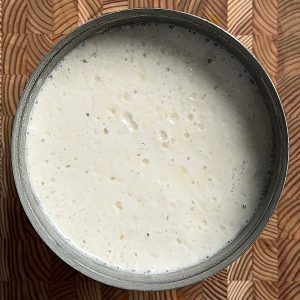
Final Preparation:
- Before making dosas, check the batter consistency. If too thick, add water gradually until it reaches a pourable consistency that coats the back of a spoon. The authentic Sona Masoori dosa batter is now ready to make perfect crispy dosas.
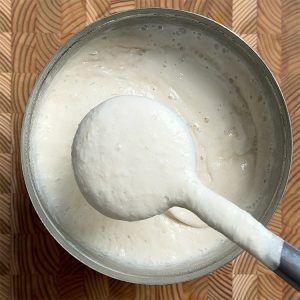

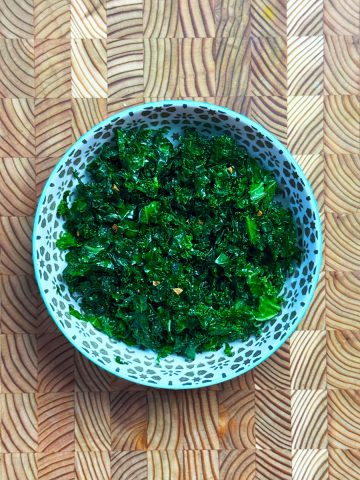
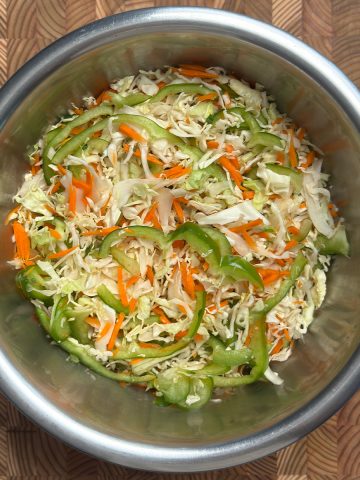
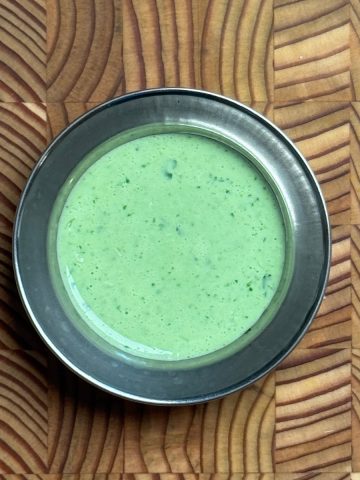
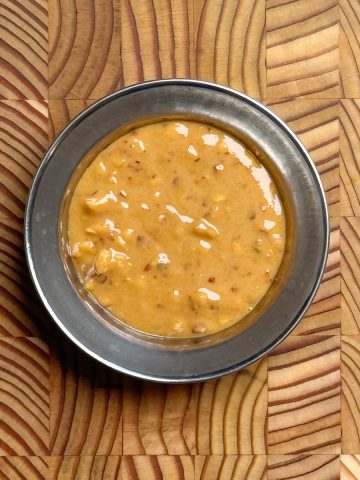
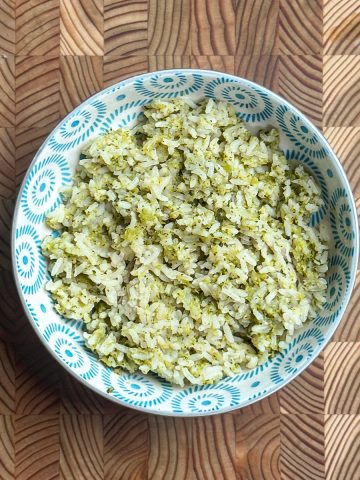
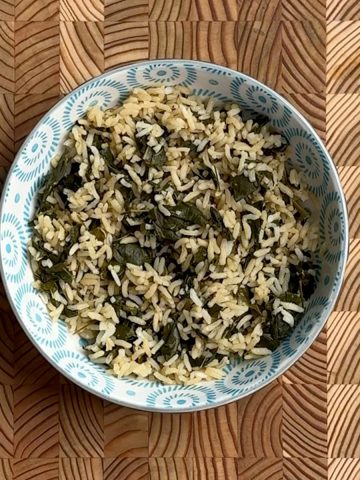
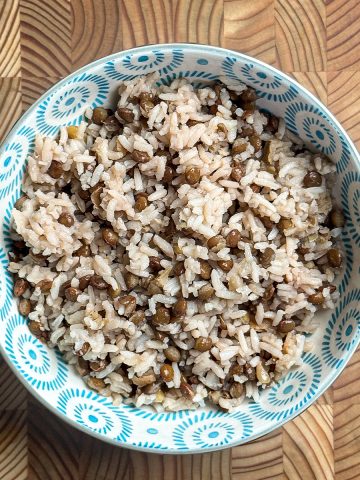
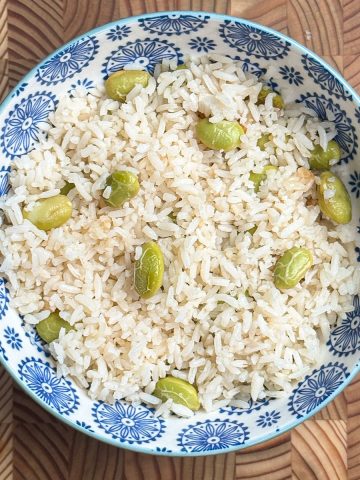
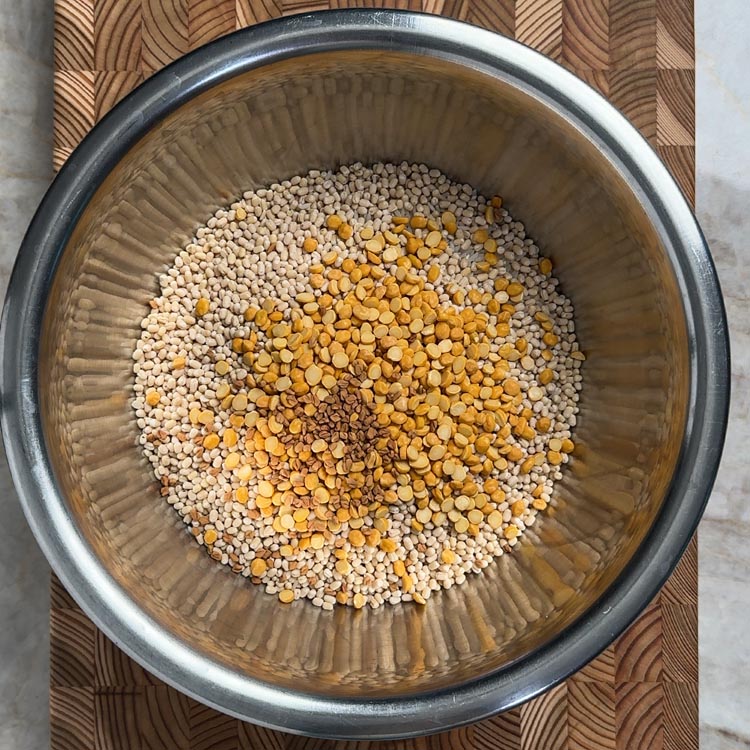
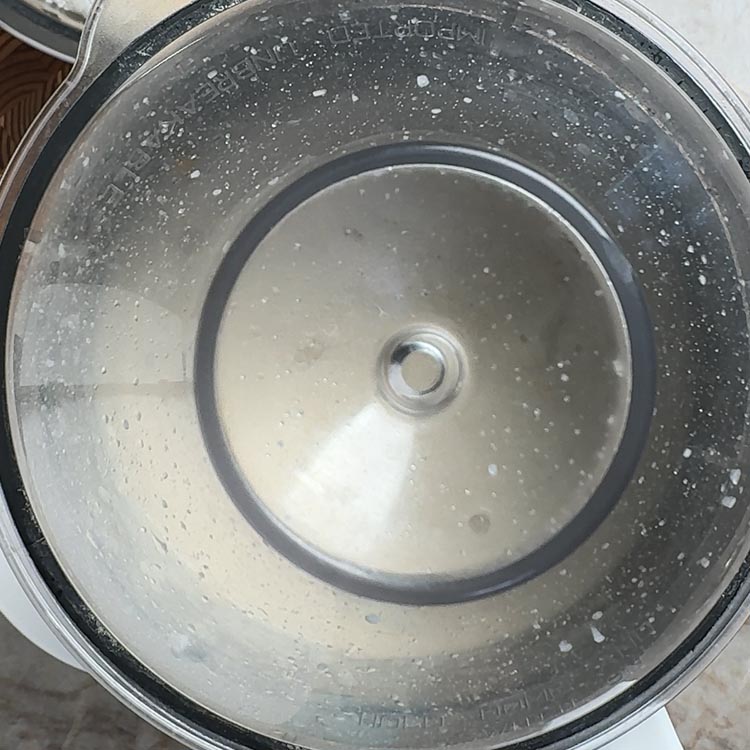
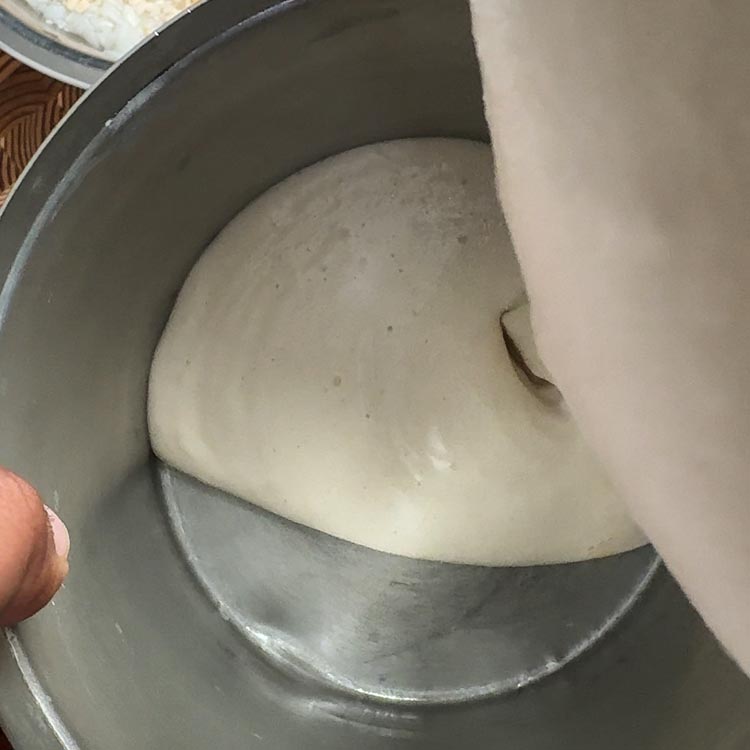
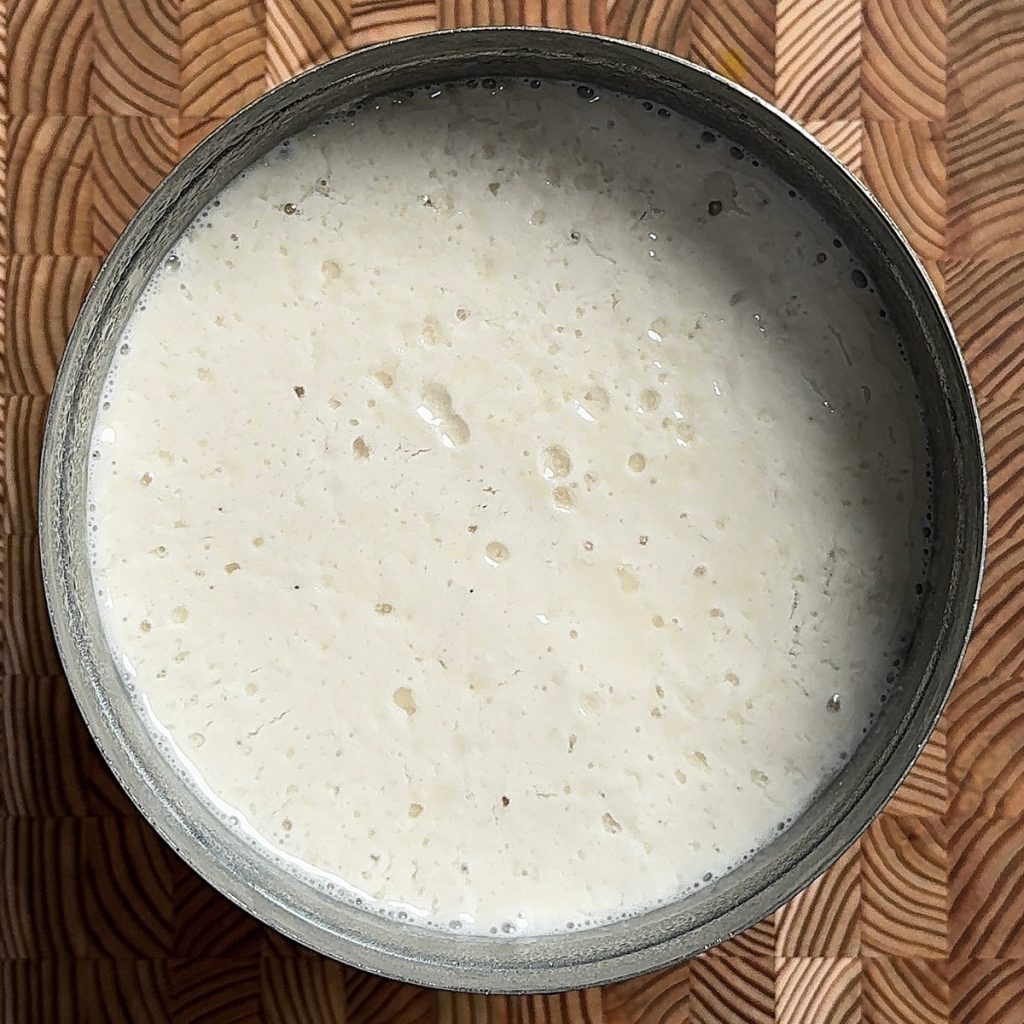
Leave a Reply